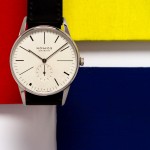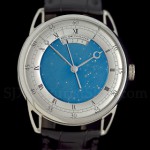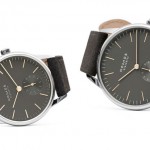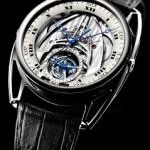Living with the Nomos Orion ‘100 Years De Stijl’
Typical Nomos, with a subtle twist.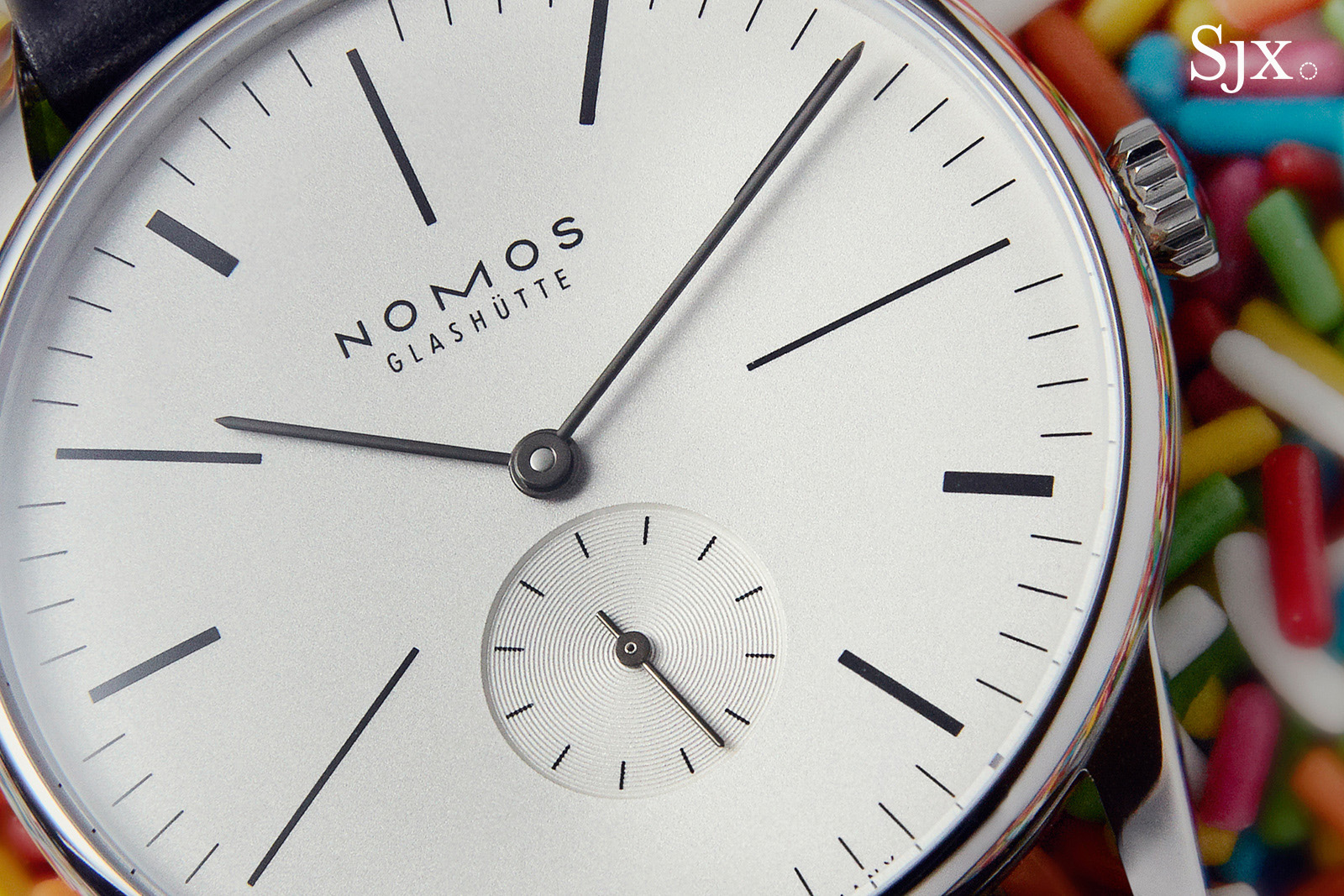
Nomos watches are highly regarded because they have appealingly finished movements and affordable price. But they possess a strong house style, which means most models look quite the same.
Though often described as Bauhaus, the Nomos style is actually inspired by Deutscher Werkbund, an early 1900s German association set up to bring quality and design to mass production, and one that later gave birth to Bauhaus. The resulting look feels proper and rather Teutonic, though recent models with dashes of colour have lightened the mood.
The styling of Orion ‘100 Years De Stijl’, on the other hand, takes after a wholly different school of design – a helpful quality for anyone who already has more than one Nomos. It’s inspired by the 1920s Dutch art movement that’s exemplified by the works of Piet Mondrian. Characterised by geometric shapes, strong lines and a handful of colours, De Stijl compositions are abstract and reduced.
Unlike typical Nomos limited editions that vary colours on a standard dial, the Orion translates De Stijl into the design in a discreet manner. The hour markers are batons of irregular length and weight – every baton is different from the next. Spread around the dial, the irregular batons create a slight visual tension, and also the effect them seemingly converging towards the centre.
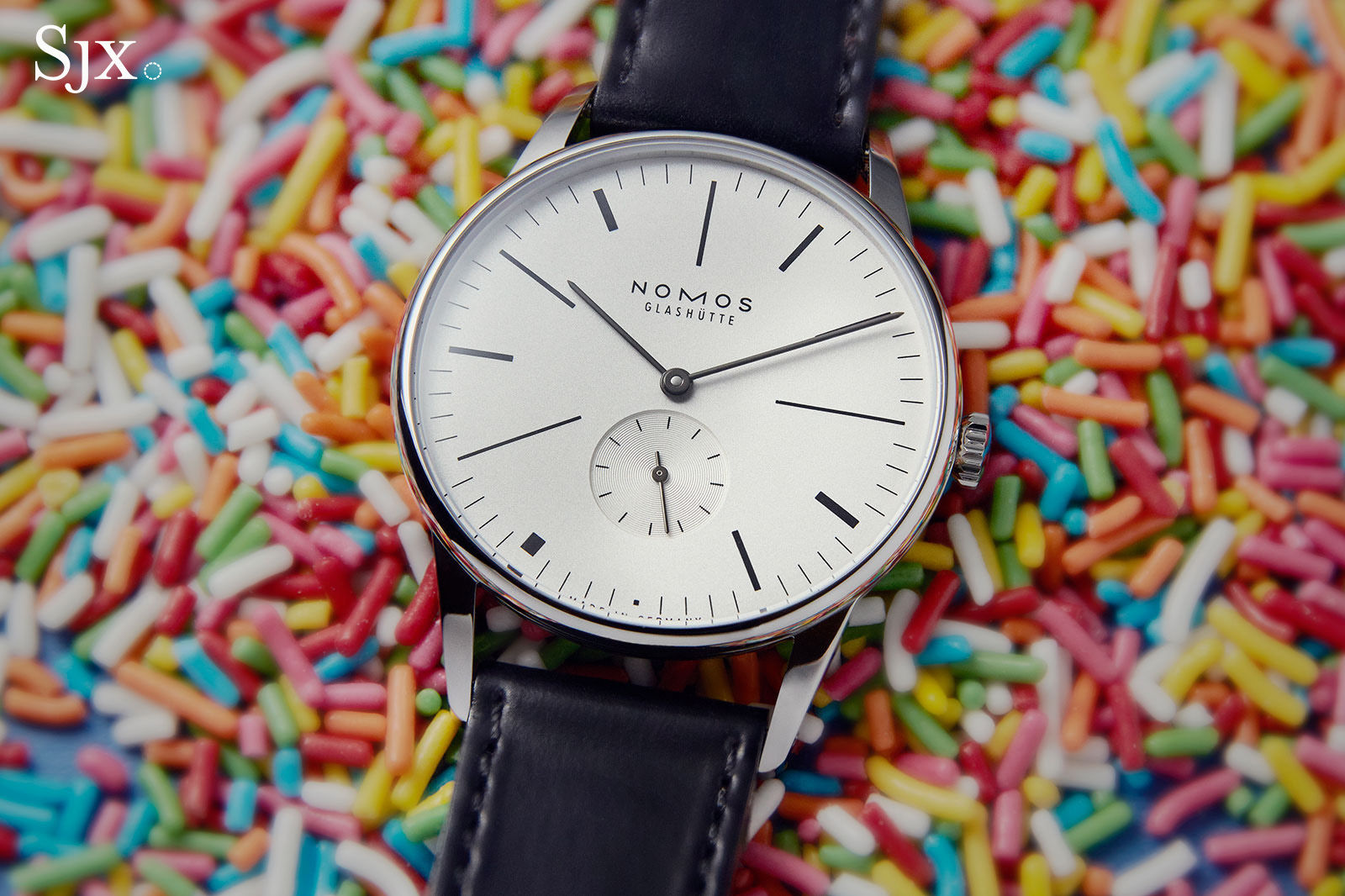
While hardly apparent from across the room, the unusual dial catches the eye up close. The look struck me as soon as I saw photos at the launch last year, which is why I bought one.
The varied hour markers, however, have no effect on legibility. The black hands against the grained silvered dial are instantly easy to read.
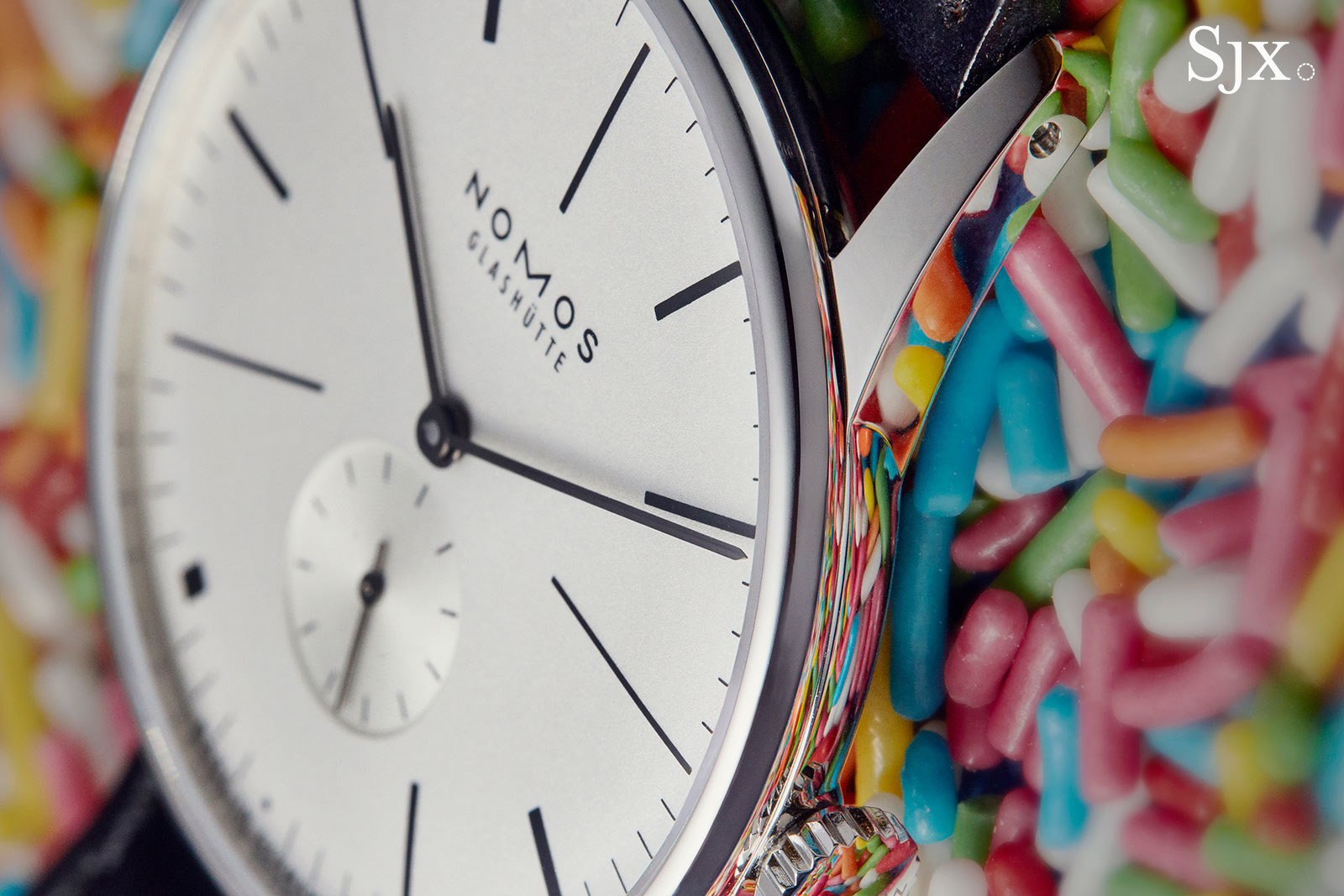
Like all 38mm Nomos watches, the subsidiary seconds sits close to the centre of the dial, the inevitable consequence of the smallish movement inside (the Alpha; more on that below). Here the sub-dial position has the unexpected upside of accentuating the visual effect of the converging baton markers, though an hour marker would have been useful in occupying the void at six o’clock .
The Orion wears thin on the wrist, with a streamlined profile. The case is under 9mm, with upward sloping sides that reduce the apparent height on the wrist.
But it also wears slightly larger than most 38mm watches. The lugs are long, narrow and angled, emphasising the size of the face. With most Nomos watch tending towards smallish cases, the perceived size here is a plus.
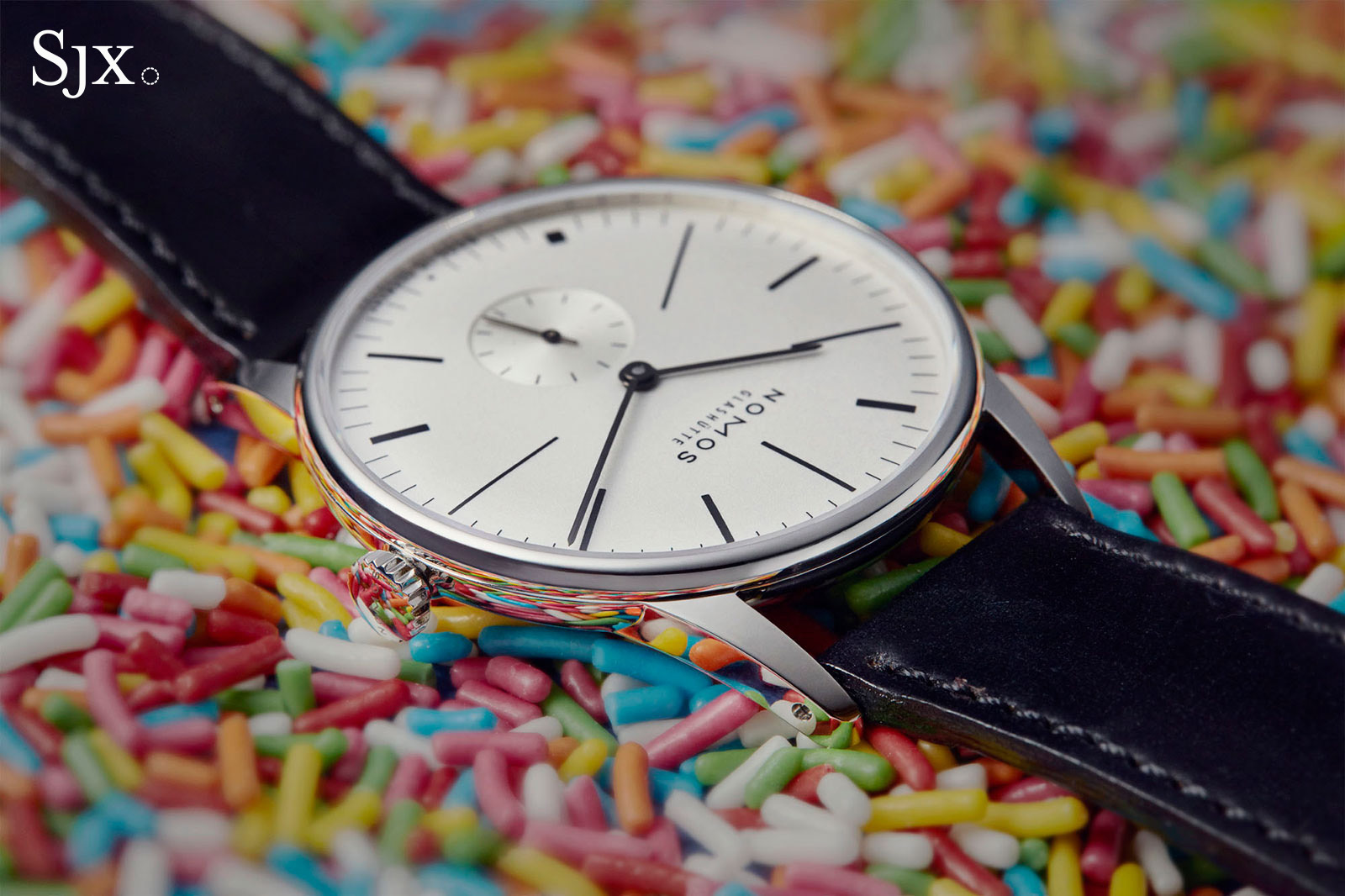
Turn it over and there’s a display back showing the Alpha. The movement is evolved from the Peseux 7001, sharing the same gear train and overall layout, but now made in-house by Nomos with nearly all its components being proprietary. Showing only the time, the Alpha is fuss-free, hand-wound and easy to use – wind, set and go.
Despite being a maker of modestly priced watches, Nomos has a strong technical team, led by Mirko Heyne, who was a co-founder of Dresden independent watchmaker Lang & Heyne. That explains why the Alpha may be the simplest Nomos movement found in its most affordable watches, but still a good one.
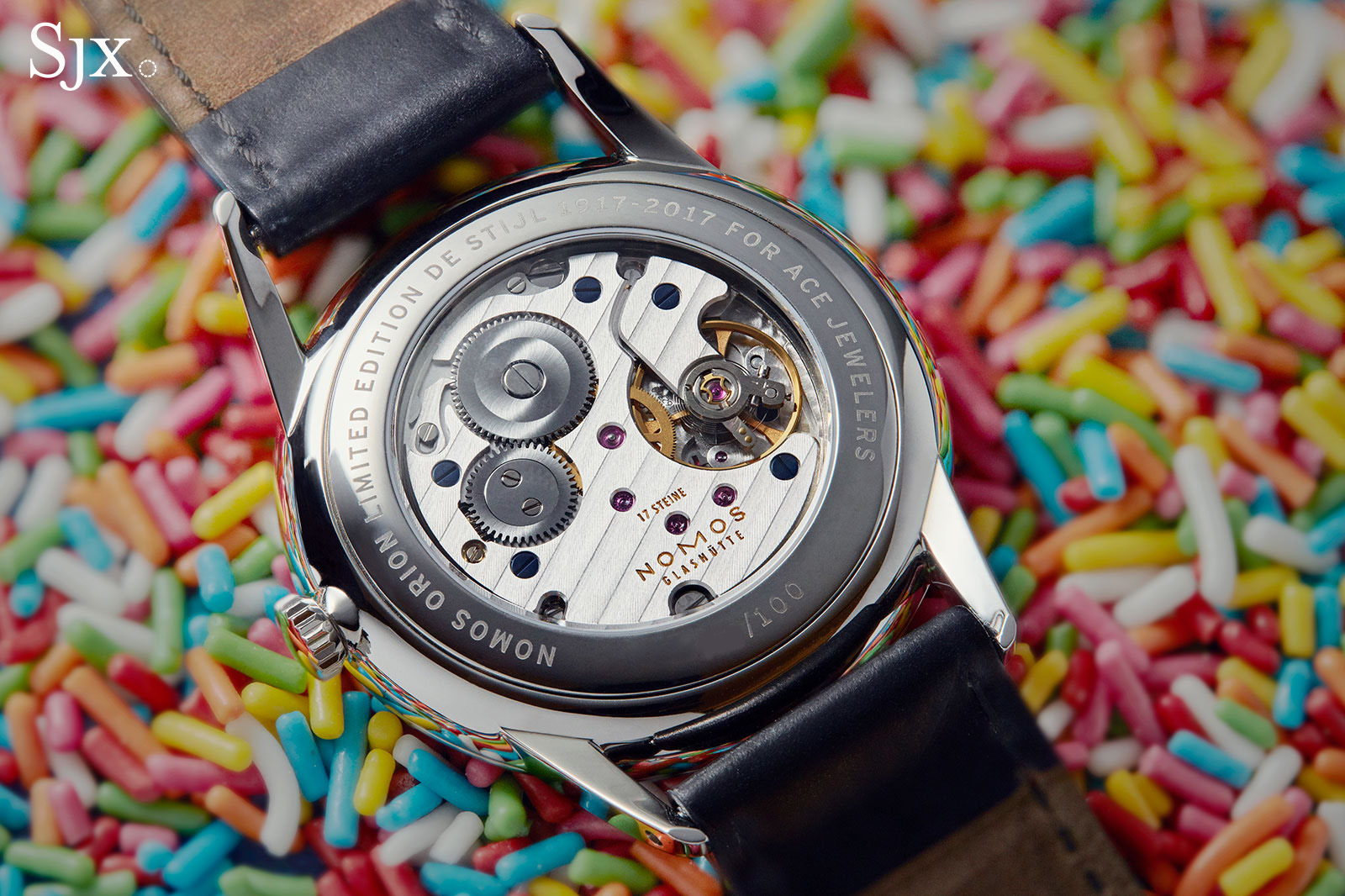
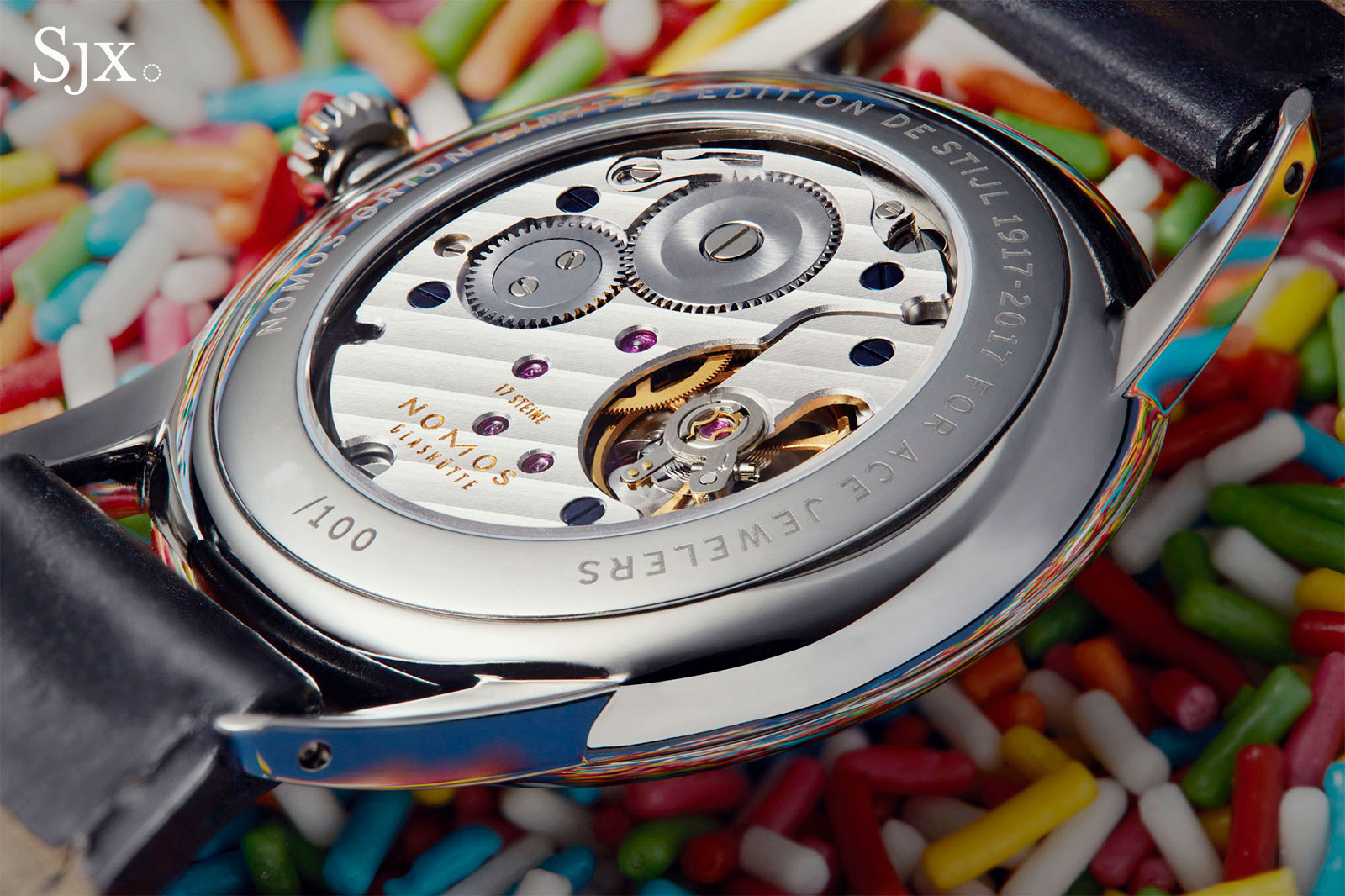
Modest status notwithstanding, the Alpha has lots of appealing details, including the winding click tensioned by a long spring, and the double solarisation finish on the barrel ratchet wheel.
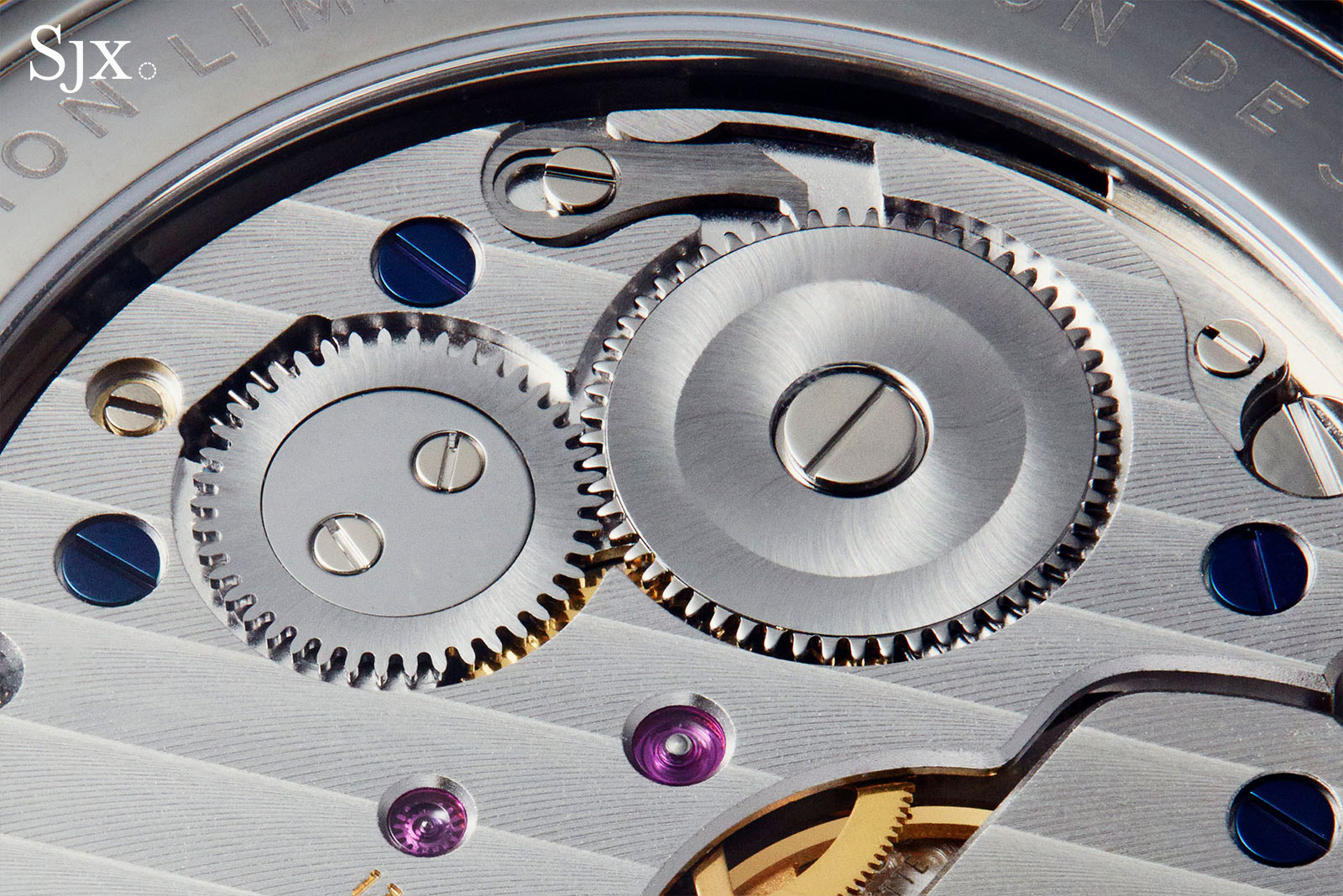
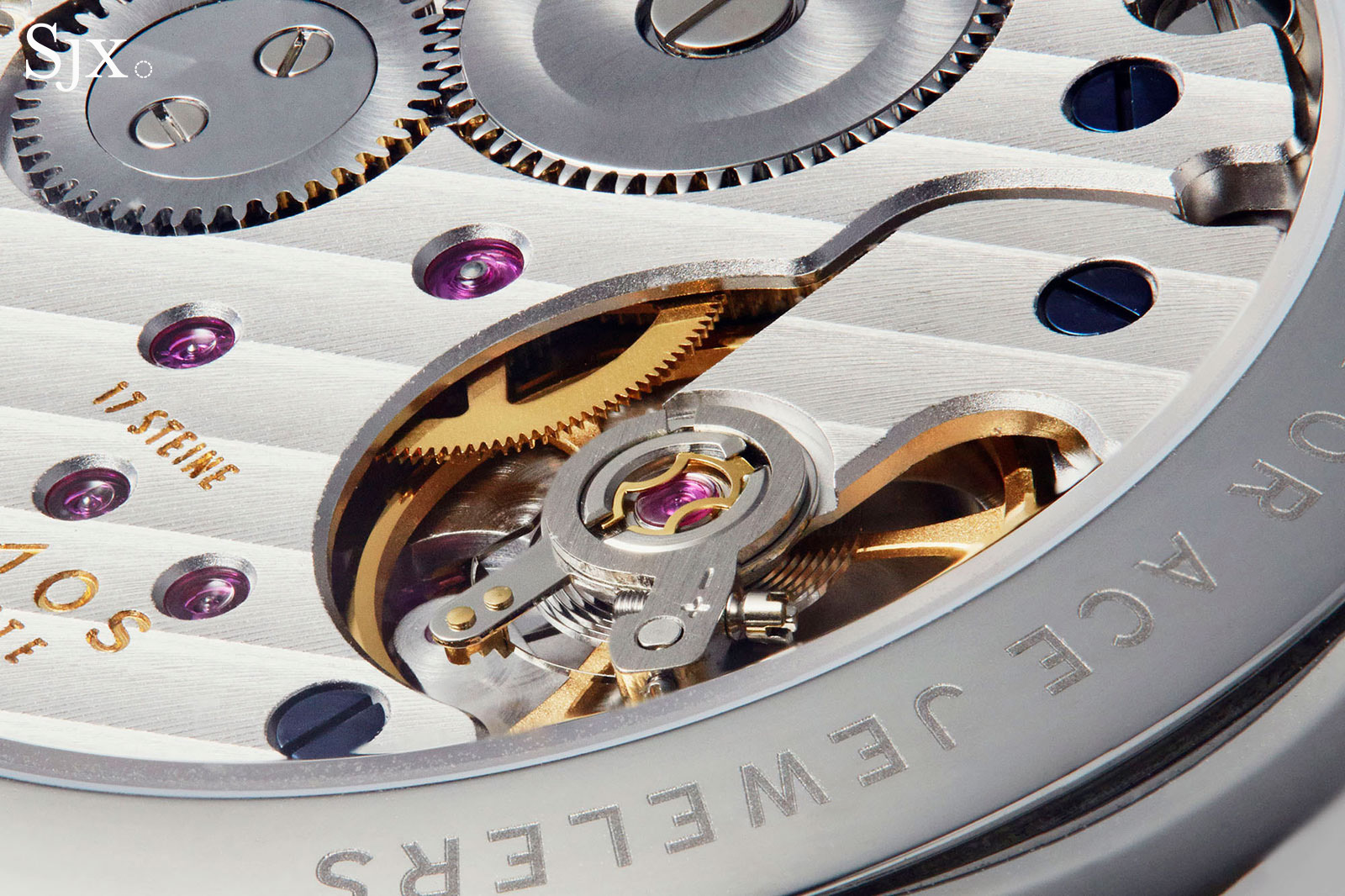
Many of the movement elements, in fact, bring to mind Deutscher Werkbund – quality in mass production – by combining attractive finishing and cost effectiveness. Effort has been put into making the movement look good where it counts, and it shows.
The plate and balance cock have bevelled edges, albeit of the stamped sort, while the screws are heat-blued and sit in recessed countersinks. Even the pallet fork bridge below the balance wheel – usually relegated to a tumble polished finish in affordable watches – is decorated with perlage and secured by a blued screw.
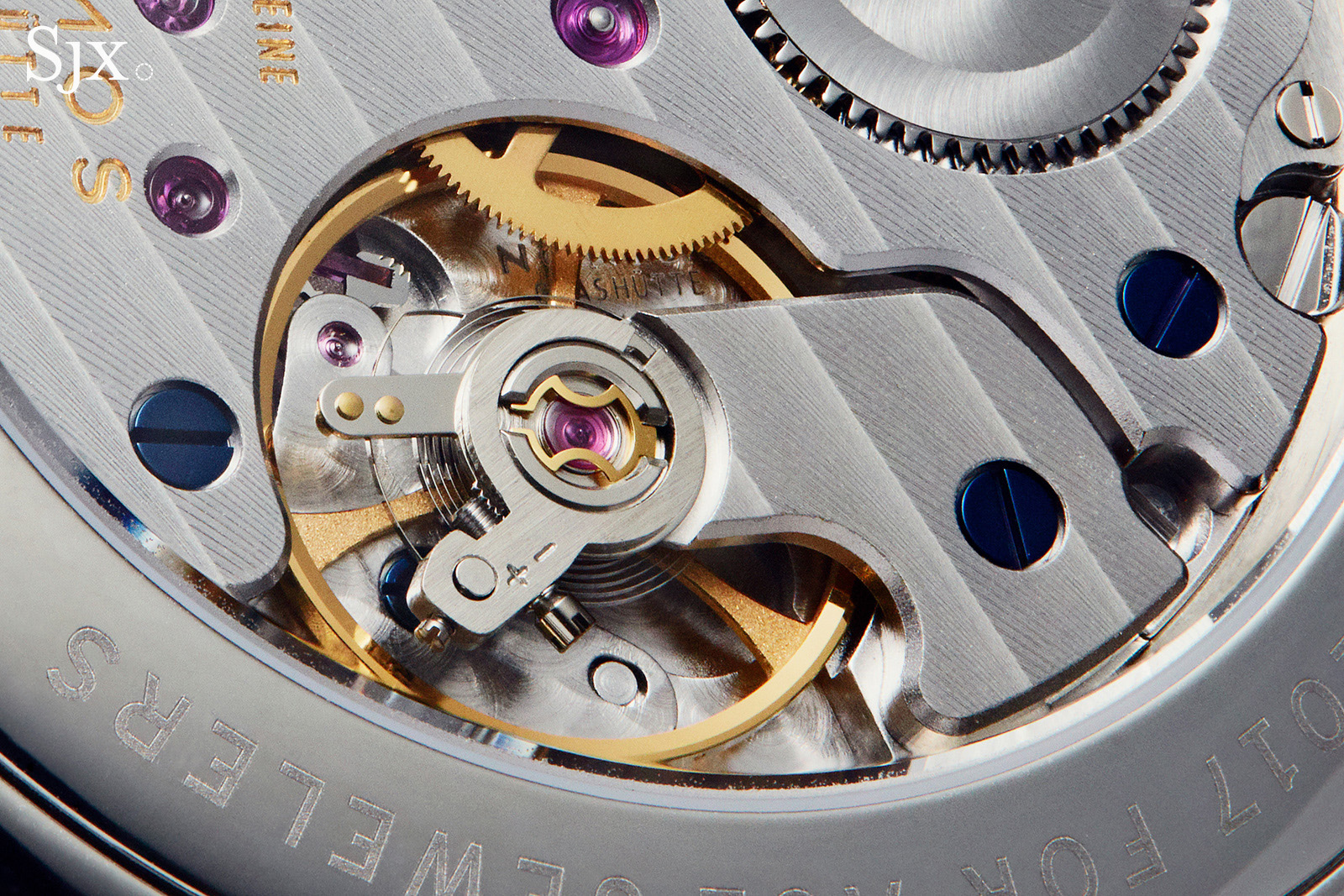
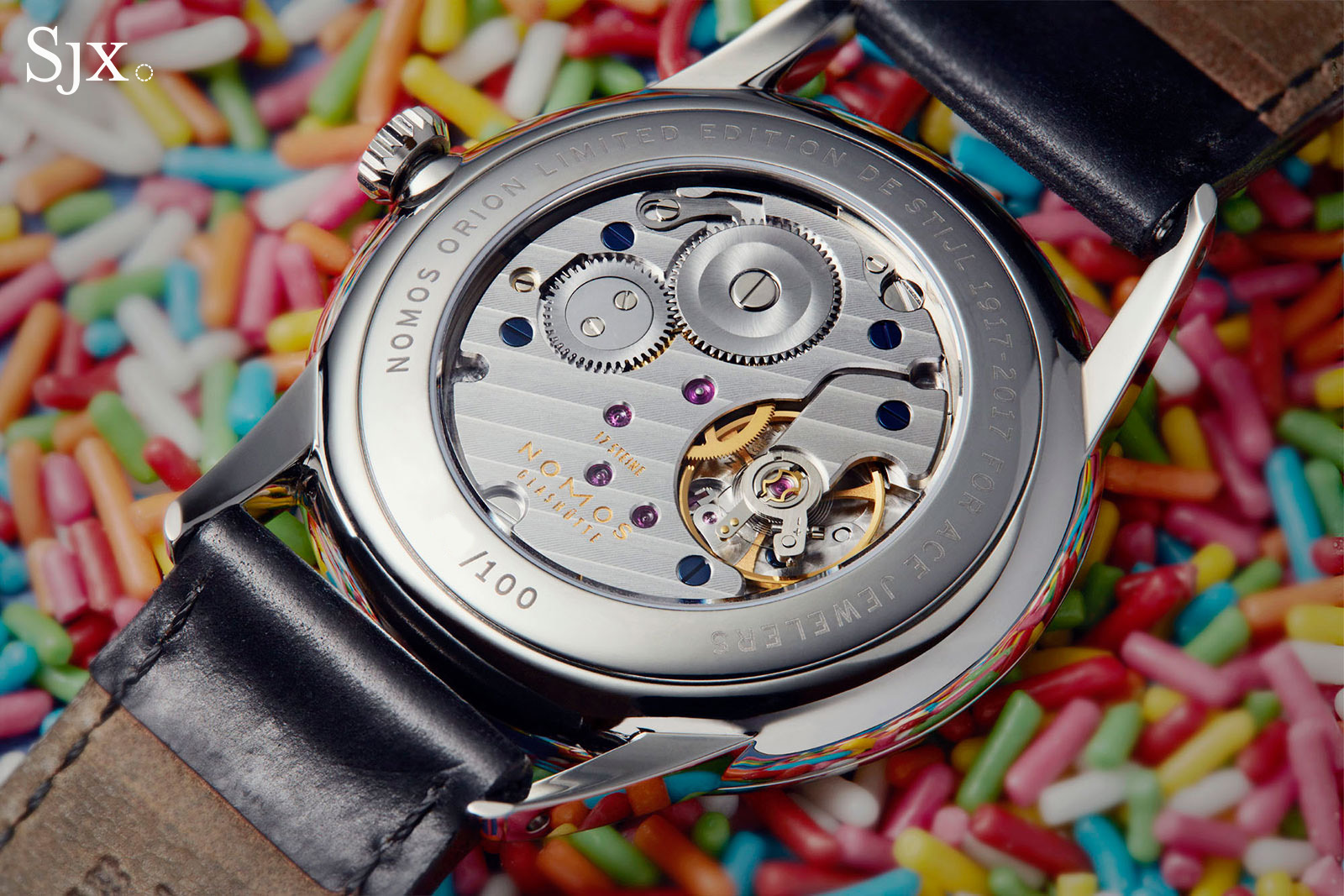
The Orion De Stijl costs is priced at €1620 before taxes, or about US$1970. The pricing is honest, being almost exactly the same as the ordinary model. It’s limited to 100 watches, and available only at Ace Jewelers in the Netherlands. For more, visit Ace.
This feature was brought to you by Ace Jewelers.
Back to top.
